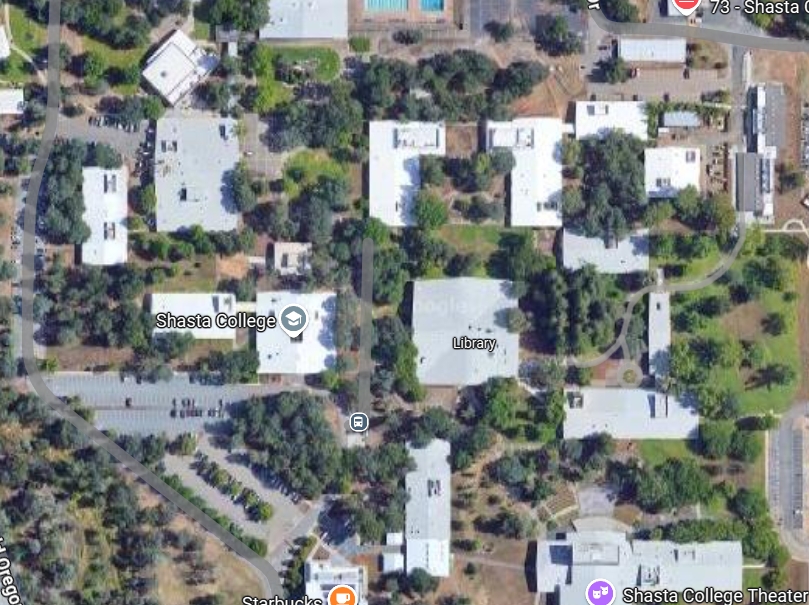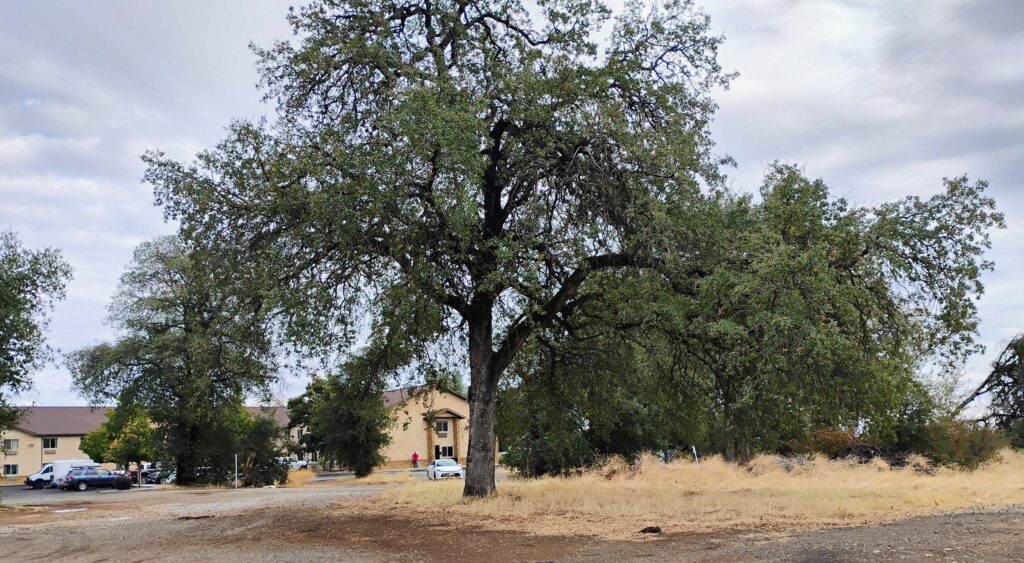
Shasta College’s proposed tree removal
It was recently learned that Shasta College was proposing to remove 24 trees on campus—some that the administration was calling dangerous, some were being removed for a concrete fire road installation, and others were being removed to increase the concrete area—and plant non-native horticulture trees. A group of students from Back to Nature, an environmental club on campus, was upset with these plans to remove more oak trees on campus. These students started a petition to save the trees and gathered over 1,200 signatures in just one week. In addition, I learned that instructors on the Shasta College Landscaping Advisory Committee had become disenchanted, feeling that their past concerns have been disregarded.
While I’m certainly not an arborist, because I’ve been working to get a new tree ordinance in Shasta Lake and Redding, I’ve become increasingly knowledgeable about the extensive pruning that can be done to old oak trees to keep them healthy. I walked the Quad area and saw one tree in a clump of oaks that wasn’t in the best health and, if removed would provide more room for the healthy trees next to it. A large, beautiful blue oak did have two dead limbs that need to be removed, but it otherwise seemed healthy.
I contacted a college administrator to relate the concerns of students and instructors alike. Three students and I spoke at the college’s Board of Trustees meeting on May 14, expressing those same concerns. KRCR-TV reporter Devin Herenda did a story about this issue (Shasta College campus renovation sparks debate over tree removal plans), and many individuals sent in emails of concern.
After a May meeting of the Landscape Committee, an administrator called me to say that the college had pulled back on cutting down at least two trees and planned to have an arborist assess the health of the other oak trees, and that there was a possibility of future compromise. The Landscape Committee has confirmed that they now feel they are being listened to, but noted that the next meeting will determine if a compromise can truly be reached.
Thanks to all of you who sent emails to the college. It did make a difference.

Redding City Council nixes tree mitigation fees
At the Redding City Council’s May 20 meeting, the Council voted down mitigation fees for the removal of oak trees during development. This was the critical time for the Council to vote to increase Redding’s tree canopy, and instead they voted with developers, 5 to 0. Council member Erin Resner was the only member that was open to mitigation fees. Revisions to the tree ordinance will now go to the Tree Committee, which has not met for a year, but considering the current City Council, few changes will be accepted.
City Attorney Christian Curtis appeared to be trying to scare Council members by stating, in his written summary, that the City had been subjected to many lawsuits over trees, including trees burned in the Carr Fire. At the meeting, he added that the City of Palo Alto had been sued about $45 million for a tree limb falling and injuring six people. Turns out he had the wrong City. It wasn’t Palo Alto, it was an adjacent city, Atherton. And it wasn’t even the City that was sued, it was Menlo College, a private school. (Atherton has an average family income of over $600,000, and an average home price of just under $8 million.) Apparently, we can’t expect the City Attorney to get his facts right when he doesn’t want the Council to approve mitigation fees for the removal of trees.
Do you know any good candidates for City Council?

Photo taken November 2, 2024, by David Ledger.
Turtle Bay’s presentation of the Redding Riverfront Specific Plan
Surprisingly, at the presentation of the Redding Riverfront Specific Plan to the Redding City Council on May 20, there was an emphasis on preserving the natural areas along the river, particularly in the Turtle Bay area. The presentation by MIG consultants emphasized that they were planning for a 300-foot protection area in the riparian areas adjacent to the Sacramento River, which is a larger setback than the 150 feet in the Redding General Plan. What the definition of “protected” is was not stated. Many citizens spoke in support of protecting the natural areas next to the river, and keeping residential and commercial development out of the Turtle Bay area north of Highway 44.
One concern about the Plan was an artist’s concept drawing of the riparian areas showing a raised trail and a small viewing pier extending over the river. This would be a Disneyland version of a natural area. People need feet on the ground, not viewing areas when we already have the Sundial Bridge.
You can see the entire presentation online: Emerging Redding Riverfront Concepts. It is commendable that they devoted a large section to environmental (see slide 17), which must reflect citizen input. Let’s hope they honor the guiding principles that they have outlined.
You can still comment on the Redding Riverfront Specific Plan and protect the environment at Turtle Bay at Comment Form: Redding Riverfront Specific Plan. Your comments do matter.

Lobbying our State Legislators with CNPS
California Native Plant Society has organized volunteers from around the state to meet with our local elected representatives or their staff in Sacramento on June 9. We will have some training on lobbying and be accompanied by a CNPS staff member who will have set up appointments. I will be attending; this will be the first time I have done any lobbying in Sacramento, so I hope to learn a lot during the training and meetings. ~David Ledger, Conservation Chair
